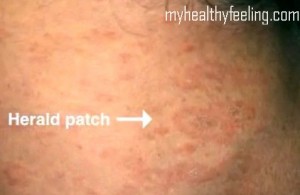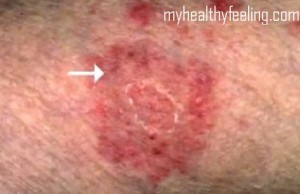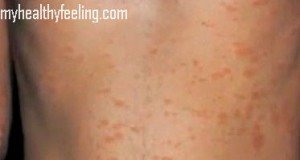Pityriasis Rosea is a skin disorder characterized by a pink large patch of rash surrounded by tiny patches of rashes. The bigger patch is termed “herald patch” or mother patch and is 2-10 centimeters big; while the surrounding smaller patches are called daughter patches. It usually arises in adults aging 10-35 years old and it is commonly found on the stomach or the back, although sometimes it may develop on the arms, neck and thighs as well. Pityriasis rosea is only a temporary skin disorder and lasts in an average of 6 to 8 weeks. In most cases, it is not known to recur after an episode of this skin condition. It starts to appear on one area only but eventually spreads out to different regions. However, it doesn’t invade the face, the hands and the feet.
Symptoms and Causes of Pityriasis Rosea
People who have pityriasis rosea experience these symptoms:
• The appearance of a large, somewhat scaly rash surrounded by tiny ones is the obvious symptom manifested in an individual suffering from this skin disorder.
• Mild to severe episodes of those itching can occur. The itching gets worse especially if the individual does an activity that allows the rashes to be exposed to heat like taking a bath in a hot shower or when the skin becomes overheated due to exercise.
• At some point, the individual suffering from pityriasis rosea also suffer from symptoms associated with flu such as sore throat, nausea, aching, fatigue and poor appetite.
The cause for this particular skin disorder has yet to be known. There are some theories though that point to the origin of this disease. The most common of which is viral infection. This explains the flu like symptoms the individual suffers while having pityriasis rosea. Some cases of pityriasis rosea are suspected to arise from herpes virus or from influenza viruses and vaccines. Another theory explains that this skin disorder is due to bacterial or fungal infections. However, pityriasis rosea is not a contagious condition.
Management of Pityriasis Rosea
Here are some useful tips on how to manage pityriasis rosea:
• If you see early signs of patching, especially the presence of the big and the small rashes, have an appointment with the dermatologist so that the appropriate medication can be prescribed.
• Do not bathe in lukewarm water because this would cause the rash to be overheated which will trigger itchiness. Aside from that, heat also makes the rashes look more obvious. For the same reasons, strenuous activities like running should also be avoided.
• Do not use soap in bathing as this irritates the rash. Use water alone and moisturize dry skin after.
Treatment for Pityriasis Rosea
It is advisable to let the rashes resolve by themselves in time. There is no specific treatment to remove pityriasis rosea. There are only medications that will help alleviate the itching. These medicines include oral antihistamines and steroids, zinc oxide and calamine lotion. These would only help manage and minimize itchiness. Do not be alarmed by these harmless rashes, just manage the symptoms and it will eventually go away.
Pityriasis Rosea Pictures
Here are pictures of Pityriasis Rosea; see how they look in the form of little rash surrounding a big pinkish, patch.



This site was… how do you say it? Relevant!! Finally I’ve found something which helped me. Thanks a lot!